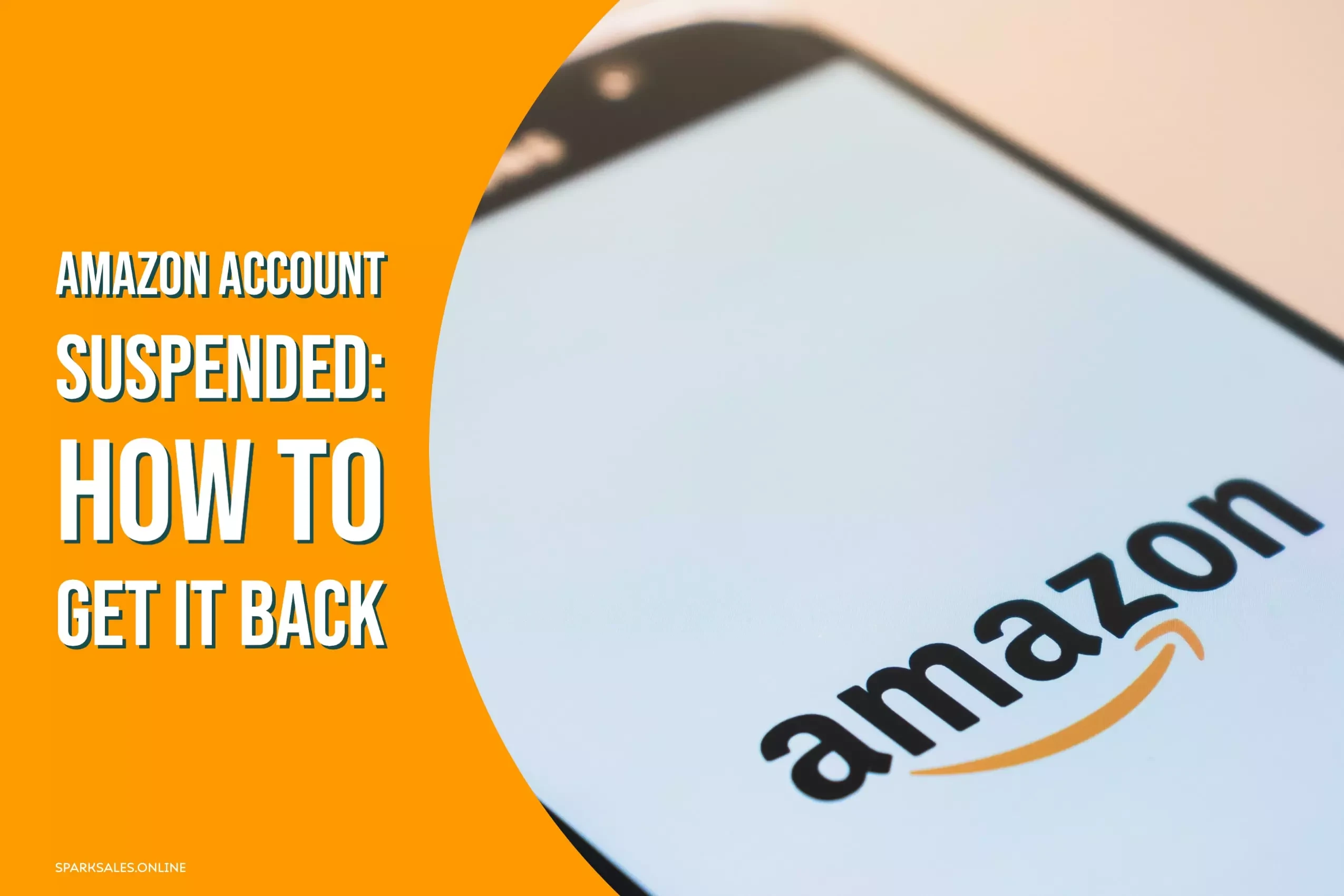Let me guess, you sold something on eBay or Amazon, and it was really exciting until you received a return request, and now you don’t know what to do. So you opened up Google to do a quick search, and here you find this article. Don’t worry; today we’re going to be covering everything you need to know.
One way you can become a better online seller is by learning how to handle returns in the right way, and in this article, I’m going to teach you how to do just that. In addition, we’ll cover the right things to do and some things that you want to try to avoid doing whenever you’re handling returns.
If you follow the steps outlined in this article, you’ll become a pro when selling online. You’ll learn how to save time, money and how to give excellent customer service to your customers, that way hopefully they’ll come back to your store and buy things again in the future.
So let’s go ahead and jump right in and start with eBay. You may or may not have realised it, but when you were creating your eBay listing and putting your item up for sale on eBay, there was a section down at the bottom that outlined your return preferences.
Now what you chose in that little box, whether you realised it or not, really impacts and affects what happens when a buyer opens up or decides to create a return. You have the return options at the bottom of your listing, and to the right of that, you have the ability to enable domestic or international returns. So to turn those on, all you would do is check the box.
When you click to accept returns, you have the option of determining how long you want to allow your buyers to return their items. You can choose between 30 or 60 days. It is important to note that eBay’s policy requires you to enable returns for 30 days. Sixty days is added and is an option too, but you don’t have to do that. The 30-day option is the bare minimum, and that also gives you the most protection as an eBay seller.

You also have the option of determining who’s going to pay for return shipping. When the buyer ships the item, you can either make them pay to return it to you or offer to pay for the item by enabling free returns. Now I do want to point out that if you allow free returns as an eBay seller, eBay will give you incentives to try to encourage you to do that. By enabling free returns, you get a lot more protection, and if the buyer were to leave you negative feedback over the return, eBay would remove it.
You also have the ability when you offer free returns to give partial refunds to your customers. For example, if they damage the item or ship the wrong thing back to you, you’re allowed to only give them part of their money back.
Whereas if you charge your customer and make them pay for the return shipping, eBay will not enable you to give a partial refund, so you actually have more protection if you pay for their return shipping. Therefore it makes sense as a seller to always follow the best practice of offering free returns because it is great for you and your customer, and it generally is the best option. A recent study found that 79% of shoppers now expect free return shipping. While 78% say they buy more when free returns are available. If you still need convincing, eBay also boosts the visibility of listings that have a 30-day free return policy.
Okay, so we’ve covered how to set up your return preferences before you list your item; now, we’re going to go ahead and talk about what to do after a buyer opens a return case.
Now, I realise that if you clicked on this article, this is probably the part you’re most concerned about because, more than likely, you have a buyer who’s opened a return case. So, you need help with knowing what to do regarding getting your item back and refunding your customer.
Plus, you’d like to know what your options and protections are as a seller to make sure that the situation is not only made right but that you get your item back and that you can then list it again and resell it.
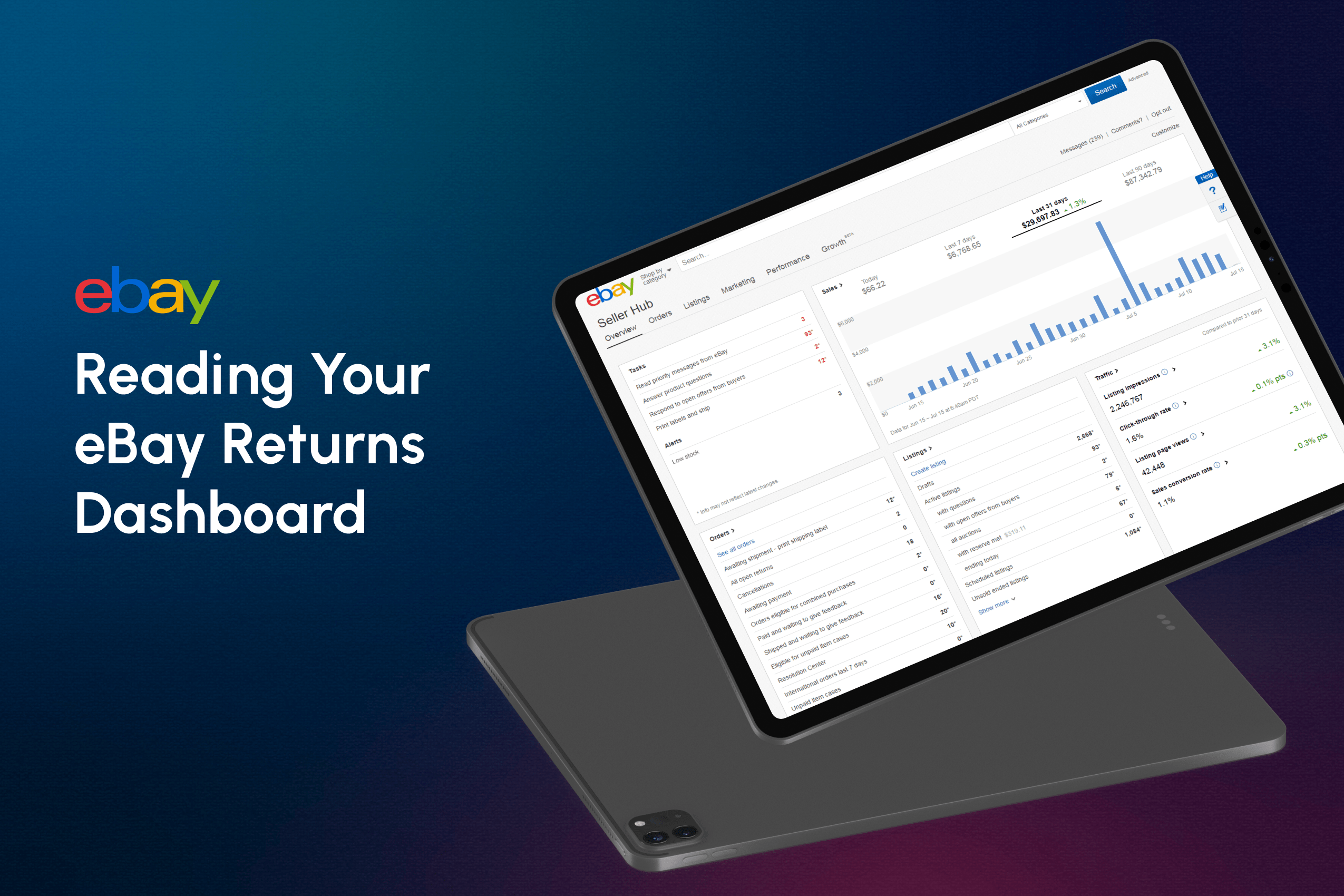
Reading Your eBay Returns Dashboard
When you’re in your returns dashboard, at the top, it says ‘manage returns’ and then down below, every return case that you have open is listed. So it’ll give the title of what you sold, what it is, and it’ll tell you the status of every return you have open. You’ll be able to see whether they’ve shipped the item, whether it’s waiting for the buyer to send it back or if you’ve already refunded the buyer and you’re waiting on them to confirm that they received the refund.

Suppose you have a return that was automatically approved by eBay, for example. In that case, if a buyer claims that something isn’t as described, eBay will automatically support the return, and the item is going to come back to you. When that happens, eBay will give them a return label, and then you have to wait until it gets returned to you. Then when the return arrives, you’ll open it, inspect it, make sure everything’s fine, and then you’ll be able to click a button to refund them their money.
Okay, so it’s also worth noting that every once in a while on eBay, you’ll have a buyer open a return, and then nothing will happen. So you’re waiting for the status to be updated, and there’ll be no movement on the shipping, and you’re kind of left in limbo.
When the buyer opens a return, they actually have a 15-day window in which they have to return the item to you or at least get it on the way. Now, if they don’t return the product within that 15-day window, what will happen is that return will automatically close, the buyer will no longer be able to return it, and all of your funds that were being held will be released. So at that point, the return is done and over with.
A buyer opening a return request and not returning the item is not an uncommon thing; it happens pretty frequently. A buyer may open a return case because they’re unhappy in the heat of the moment, then they change their mind. Perhaps they actually do like the product, or they want to keep it, or maybe they don’t want to have to go through the hassle of boxing it back up, putting a label on it and taking it to the post office.
This is more or less the most common reason for lack of movement in a return case. Many people don’t want to have to go through the inconvenience, and when they find out that there’s actually a process involved and they’re not just going to receive an instant refund, they don’t even bother doing it.

eBay Return Dashboard Communication Tools
If you visit your eBay return dashboard, you’ll notice that right beside the details arrow, there is a little drop-down tab, and if you click on that, it’s going to pull up a micro menu. You can choose to ‘contact your buyer’, and when you click on that, it gives you the option of messaging your buyer. In the messaging system, you can choose to contact your buyer to provide them with further instructions on how to handle the return.
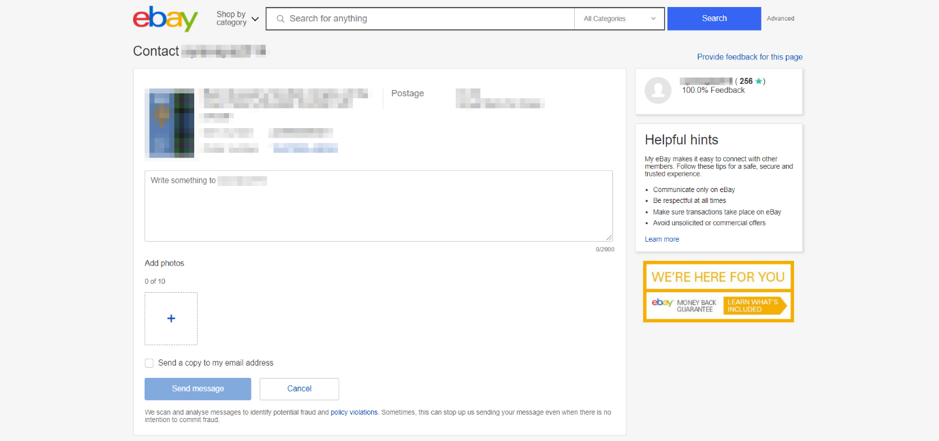
Basically, any communication you need to have regarding the return will be documented in the messaging system, and it’s also important to note that when you put anything in writing, anybody who works at eBay will obviously be able to see it. So by being professional, you’ll have more of an advantage in terms of getting eBay to side with you.
If things do go wrong and the return isn’t going very well, you do, of course, have the option of reporting your buyer. If you go back to the ‘seller hub’ and click on that same down arrow, you’ll notice that there’s a tab that says ‘report buyer’, and when you click on that tab, you’ll have a menu of choices where you can choose to report the buyer for what is inappropriate.
Now speaking of appropriate, make sure that you’re using this tool correctly. Do not report a buyer if they’re not doing anything wrong. eBay will look at this report and decide whether or not there need to be any penalties or any actions on the person abusing the return system. If you are dishonest, it can actually come back on you, so make sure that you’re being professional here at all times as well.
Okay, so now that we’ve walked through a few different return scenarios, I want to point out that it’s important to note that every return may be slightly different depending on what the buyer chooses as a return option. So you might have different options; for example, if you sell them a brand new item that you have more of, sometimes you’ll have the option of offering a replacement product instead of a refund.
Then other times, if you don’t allow returns and they chose a buyer’s remorse option, you can actually choose to decline the return. So then you don’t have to do anything else, you get to keep all of your money, and the buyer has to keep the product because they don’t have the option of returning it. In this way, you may have other return options in your return listing that you’ll be able to choose from.
If you have a return that isn’t going very well, maybe the buyer is upset, they left you negative feedback, or perhaps they shipped you back something that wasn’t what you sent them. I want to encourage you and say that not every return is like that, and returns don’t happen all the time.
So don’t be like some other sellers that when they get a return, it shuts down their entire store, and they never sell anything ever again on eBay. It might sound crazy, but a lot of people get upset and take returns personally. Don’t be that person because there’s way too much opportunity on eBay to let a silly thing like returns keep you away.
Therefore with returns, the best advice is to try to resolve things quickly. Help the buyer get your product back and refund them their money because, after all, if you get your product back, you can then turn around and put it right back on eBay. It only takes one click to re-list your item all over again.
Another thing to remember is that when you have a return and refund the buyer their money, eBay gives you your fees back that were associated with that sale. So you’re really not down any money, you get your item back, and you can sell it again.
Plus, a lot of times, when you sell it again, you won’t have an issue with the next buyer so keep pushing forward, keep making those sales, and you’ll be much better off for it.
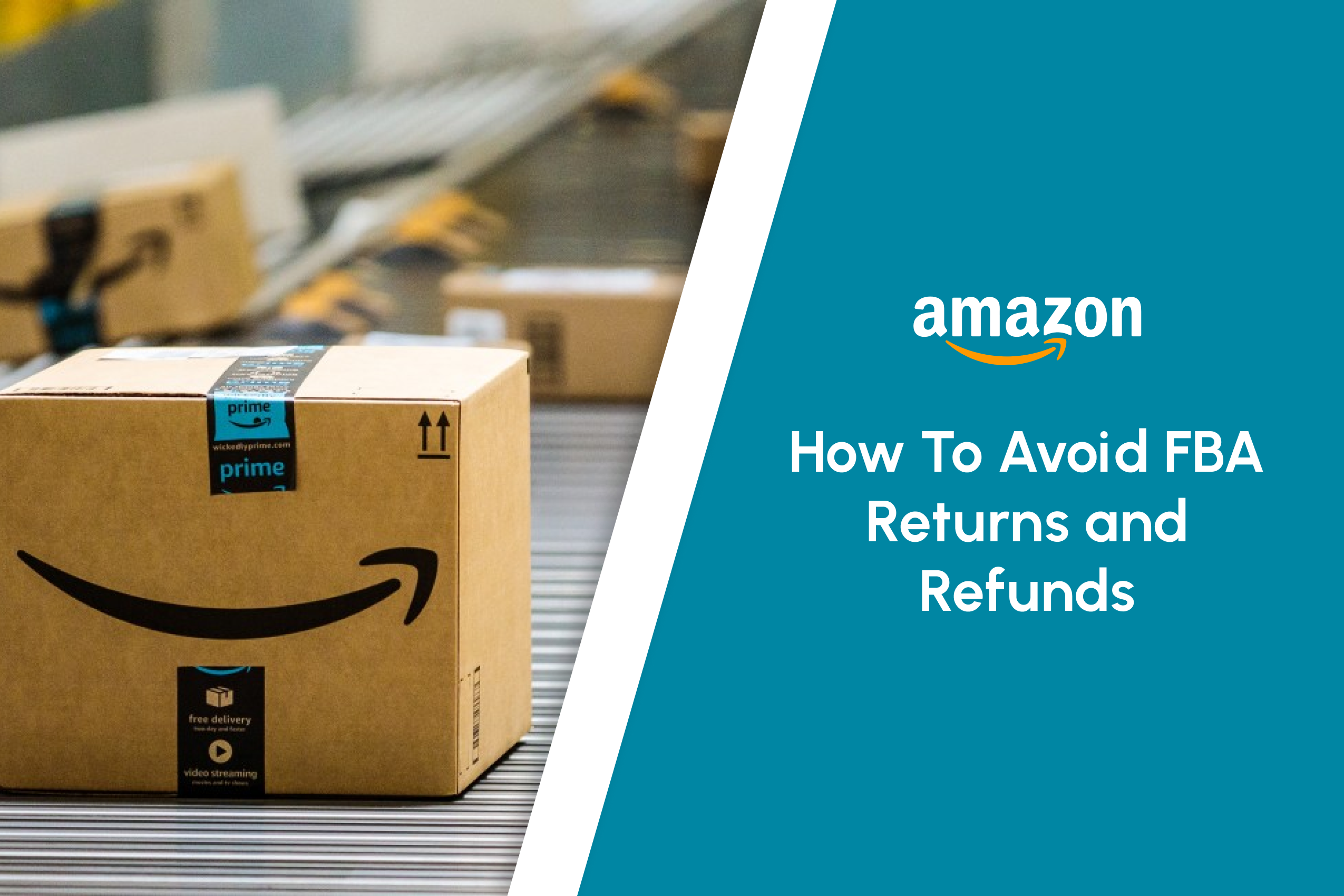
How To Avoid Amazon FBA Returns and Refunds
Now even if you are one of the most experienced Amazon FBA sellers, or you’re brand new at selling on Amazon. Amazon returns, and refunds might be one of the most confusing things in this business. Mainly because most people don’t know the answers to these questions:
- What qualifies for a refund?
- What can a customer say to get a refund?
- How can I avoid getting a bunch of refunds?
Getting refunds and returns is part of the business, but there are ways to go ahead and avoid getting refunds and avoid a high return rate. Avoiding a high return rate is imperative because we all know that if you have a higher return rate, you are likely to get suspended from selling certain products on Amazon, and nobody wants that.
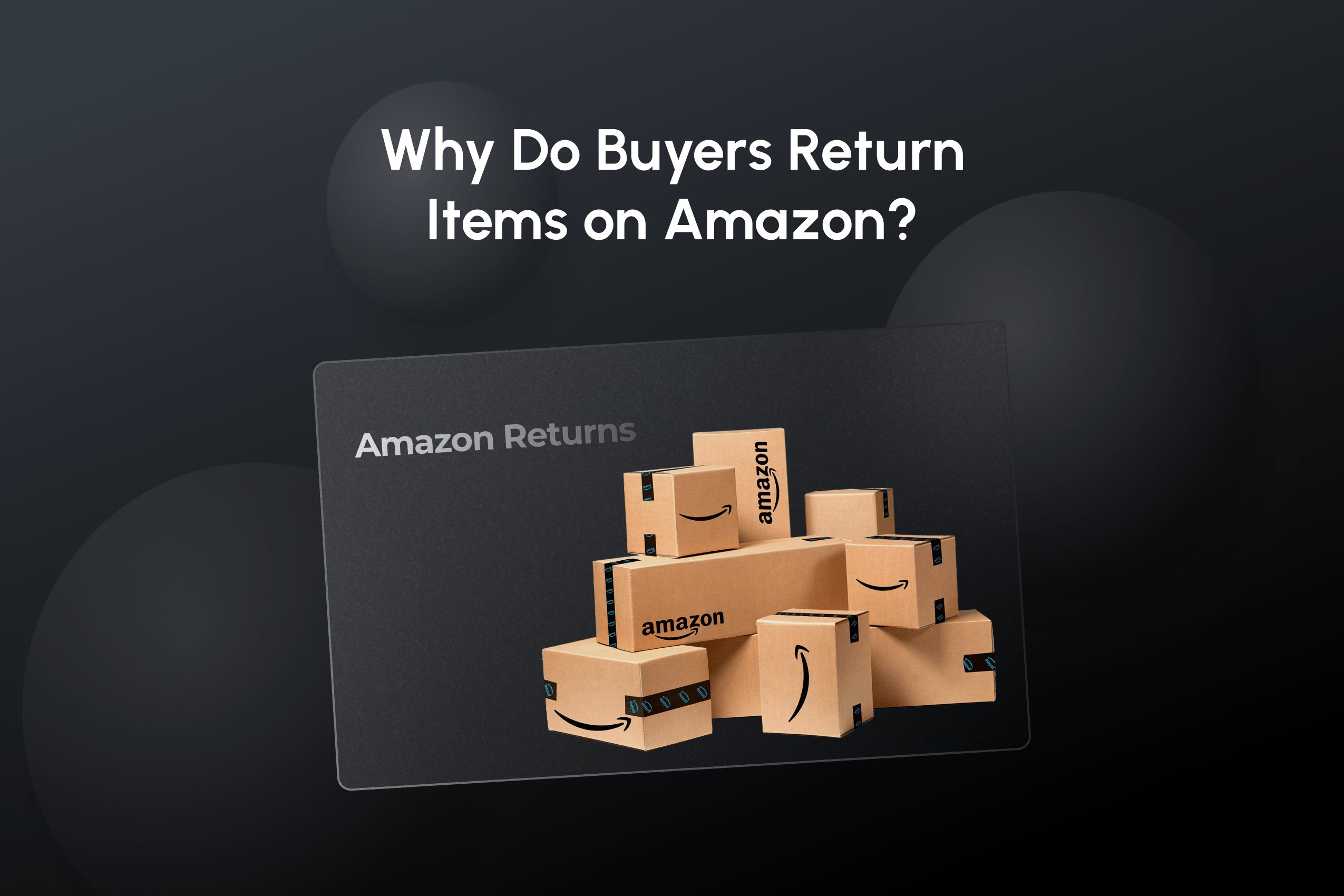
Why Do Buyers Return Items on Amazon?
However, before we go over that, we have to look at the main reasons why customers return products and they are as follows:
- The first one is just a generic customer return; this will usually be around 80% of all of your returns. It means that a customer did not like the product. Maybe it arrived damaged, and they are asking for a refund.
- The next one will be ‘order not received’.
- Next is ‘delivered late by carrier’.
- Missed fulfilment promise.
- Refused delivery.
- Shipping address undeliverable.
You have to keep in mind that Amazon goes ahead and refunds the customer as soon as they request a refund. However, they give the customer 30 days to return that item, so if after 30 days a customer did not return that item to Amazon, they then charge their account and reimburse the Amazon FBA seller.
If an Amazon customer does go ahead and return that item to Amazon’s warehouse, then Amazon has two choices. First, they’re going to review that item, and if they deem that it is sellable again, meaning that there is no damage or anything and it’s in perfect condition; then Amazon’s going to go ahead and choose to put that back into your inventory on Amazon FBA for another customer to purchase.
However, if Amazon receives that item and it is broken, or whatever the case may be, they’re going to put it in a different section. The Amazon FBA seller can then choose if they want Amazon to throw that item away or if they wish for Amazon to return it to the seller. The seller can then go ahead and inspect it, maybe clean it up and send it back into Amazon FBA warehouses if they want to.
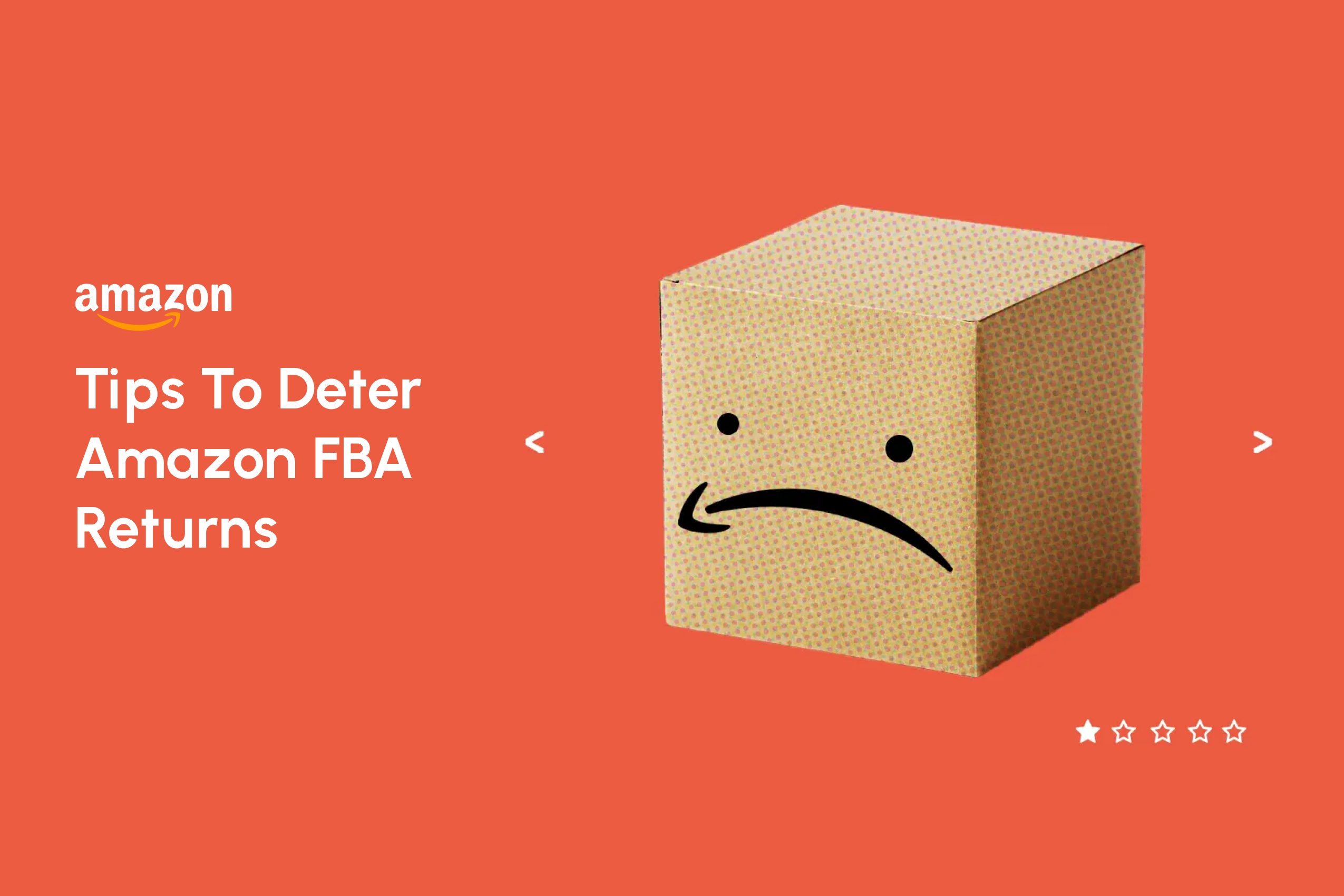
Tips To Deter Amazon FBA Returns
Let’s talk about some of the different things you can do to avoid a lot of returns. As I mentioned, you’re not going to go ahead and eliminate returns completely, so you have to bake it into your financials and your margins to make sure that it is accounted for.
However, in your Amazon FBA business, you can look into how you package your items and you can kind of try through your packaging choices to persuade a customer to maybe avoid returning the item.
What I mean by this is to think about using packaging that the customer needs to tear open. So when a buyer goes ahead and opens the item, they might be tempted not to return it because they already opened it and can’t reseal it.
Obviously, Amazon is still going to go ahead and allow a buyer to return the item anyway, no questions asked. However, if this deters even 5% of returns, it can definitely be beneficial to your business.
For instance, you may be struggling to think of what you can do to dissuade buyers from returning large, expensive items. One idea is instead of going ahead and putting tape on the actual box itself; you could place a protective plastic seal all around the outside of it. Psychologically this can then signal to a buyer that once they open it, they have broken the security seal, and they might not want to deal with the hassle of trying to reseal and return it.
Obviously, in both of these instances, a customer can return the item, but if you can convince one customer not to return an item because they ‘opened it’, that’s better than nothing. So again, that is just a little psychology trick, and maybe you can go ahead and try and implement it in your business.
I hope this cleared up some things when it comes to returns and refunds with Amazon and eBay. If you’re questioning whether to start selling on Amazon and eBay or need support with your business, and are looking to grow your sales further or maybe even get set up, contact us today. One of our team will reach out to set up a call and discuss the support that you need.



